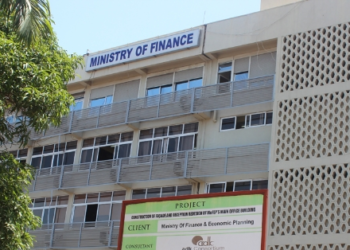The National Council for Curriculum and Assessment (NaCCA) has incorporated Quick Response Codes (QR codes) into textbooks to help users differentiate between approved and unapproved ones.
Professor Edward Appiah, the Director-General of NaCCA, revealed this initiative during an interview, emphasizing the importance for both schools and parents to verify the presence of the QR Code on any textbook they purchase. This measure aims to enhance transparency and ensure adherence to approved educational materials.
“A textbook without a QR code means that it has not been approved by NaCCA and, therefore, might not be suitable for use by our learners in school,” he said.
NaCCA’s implementation of QR codes is a direct response to the inundation of the book industry with inappropriate books and other teaching and learning materials (TLMs). Many of these materials often end up in schools for student use. This proactive measure aims to mitigate the circulation of unsuitable educational resources by enabling users to easily identify approved materials through QR code verification. It reflects NaCCA’s commitment to safeguarding the quality and integrity of educational resources accessible to learners.
“By our mandate, NaCCA is to review and approve the quality and quantity of textbooks and other TLMs of educational values for pre-tertiary institutions,” Prof. Appiah said.
He explained that it had come to the notice of the Council that some schools were using unapproved textbooks, and the Council had decided that the QR codes would help sanitise the industry and ensure that only approved textbooks were used in our schools. He admitted that sometimes the schools did not even know the difference between approved and unapproved books and was confident that with the introduction of the QR code, books without it would not be patronised.
“We have and will continue to sensitise schools and the general public to it to ensure that publishers do not dump unapproved books on them,” Prof. Appiah said.
Going through the process of using the QR code, the NaCCA boss said users had to download the code scanner from either the Google Play store for Android phones or the Apple App Store for iPhone users to be able to use it.
He explained that, with that special NaCCA scanner, the public could scan the QR code displayed at either the front or back of the book, indicating that it had been approved, adding that if the QR code on the book was different, it would not be captured by the special scanner.
Asked what happened to those books already in the market, which NaCCA approved before the introduction of the code, Prof. Appiah explained that the Council was in talks with the Ghana Publishers Association to get them to secure the hard copy of it to get it embedded on already approved books.
He was rather quick to add that the Council would not regularise already published and printed books, since that would compromise the use of the QR code. Prof. Appiah advised the schools to stay away from books without the QR code, as the Council could not guarantee their authenticity and usefulness for the learners.
He was confident that “this QR code regime will get publishers to sit up and ensure that they meet minimum standards with the books they produce.”






























